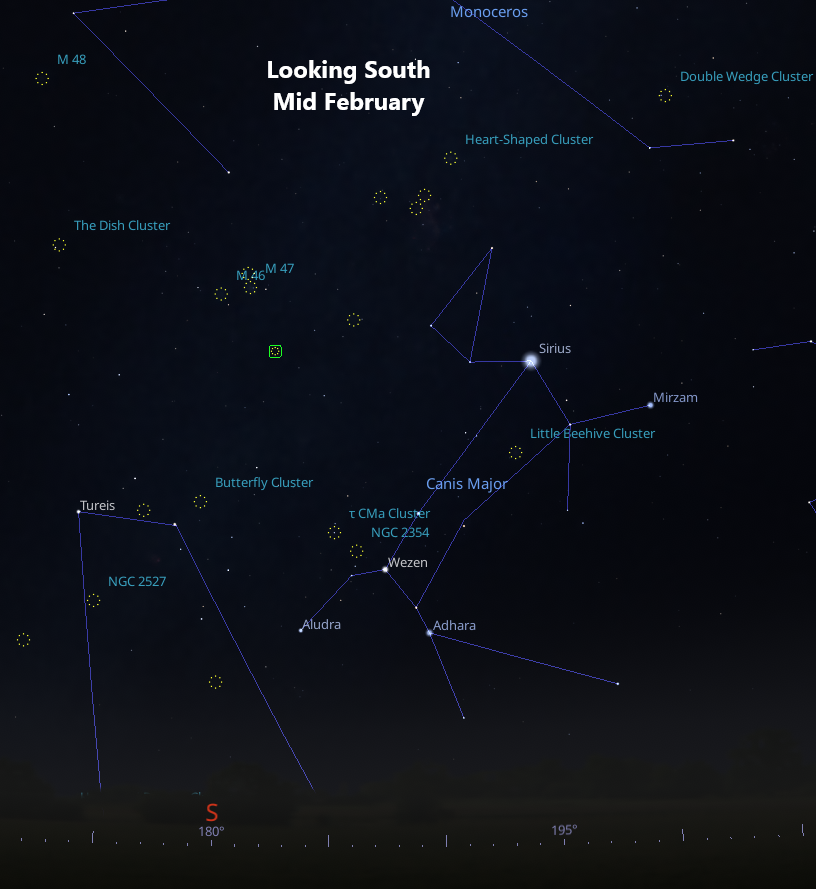Your guide to the february sky with Dark Sky Advisor, Steve Tonkin.
We’re going to use binoculars for this month’s sky, because they are ideal for searching out our targets: open clusters. These are groups of recently (in astronomical terms) formed stars that mostly shine a brilliant white, like clusters of diamonds. They come in various apparent sizes and brightness – in general, the brighter ones are nearer to us.
 We’ll start by identifying Sirius, the brightest star in the night sky; if you’re unsure, you can verify it by following the line of Orion’s Belt down to the left. Put Sirius near the top of the field of view of your binoculars and you should see a cluster of stars below it (near the bottom if your binoculars are around 8x or 10x). This is the Little Beehive cluster (you’ll have to wait till next month to find out why it has that name), more formally known as M41. The M stands for Charles Messier, French King Louis XV’s ‘ferret of comets’; this cluster is the 41st entry in his list of objects that were not comets.
We’ll start by identifying Sirius, the brightest star in the night sky; if you’re unsure, you can verify it by following the line of Orion’s Belt down to the left. Put Sirius near the top of the field of view of your binoculars and you should see a cluster of stars below it (near the bottom if your binoculars are around 8x or 10x). This is the Little Beehive cluster (you’ll have to wait till next month to find out why it has that name), more formally known as M41. The M stands for Charles Messier, French King Louis XV’s ‘ferret of comets’; this cluster is the 41st entry in his list of objects that were not comets.
Next, use the chart to identify the star Wezen, and then scan up to the left to locate the τ CMa Cluster. It is named for the dazzlingly bright star, τ CMa, that lies in the middle of it. See how different it is to the Little Beehive: much more compact and with a faint blueish hue.
There are many more star clusters in this region of the sky. Some of them are marked with dotted circles on the chart, but as long the sky is transparent, and your eyes are dark-adapted, you should see dozens more. How many can you find?
Finding these faint objects is facilitated by dark skies. If you’d like to improve your lighting to reduce light pollution, do get in touch with us: we may even be able to give you replacement lights. Find out more in our Dark Sky pages.
